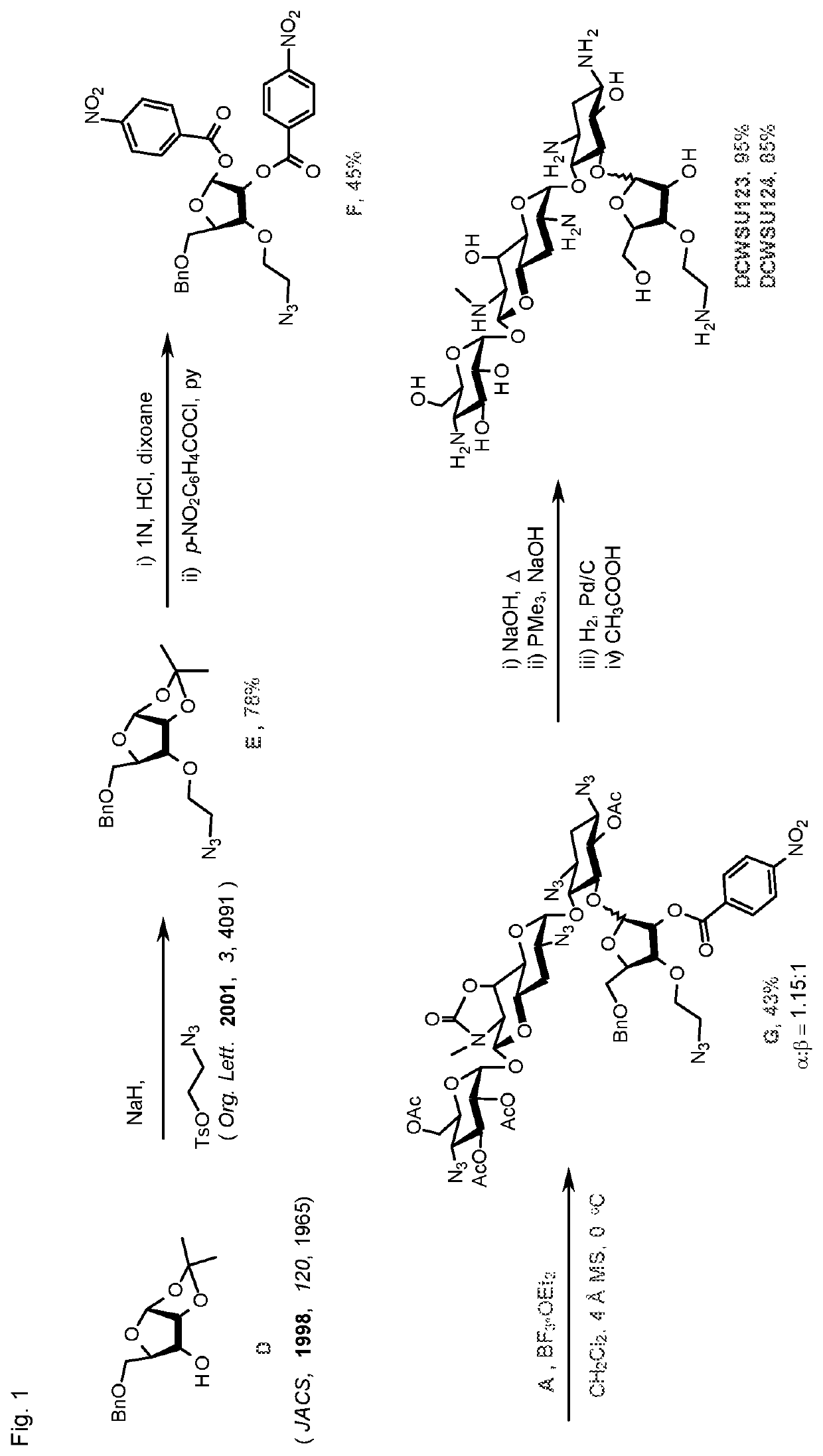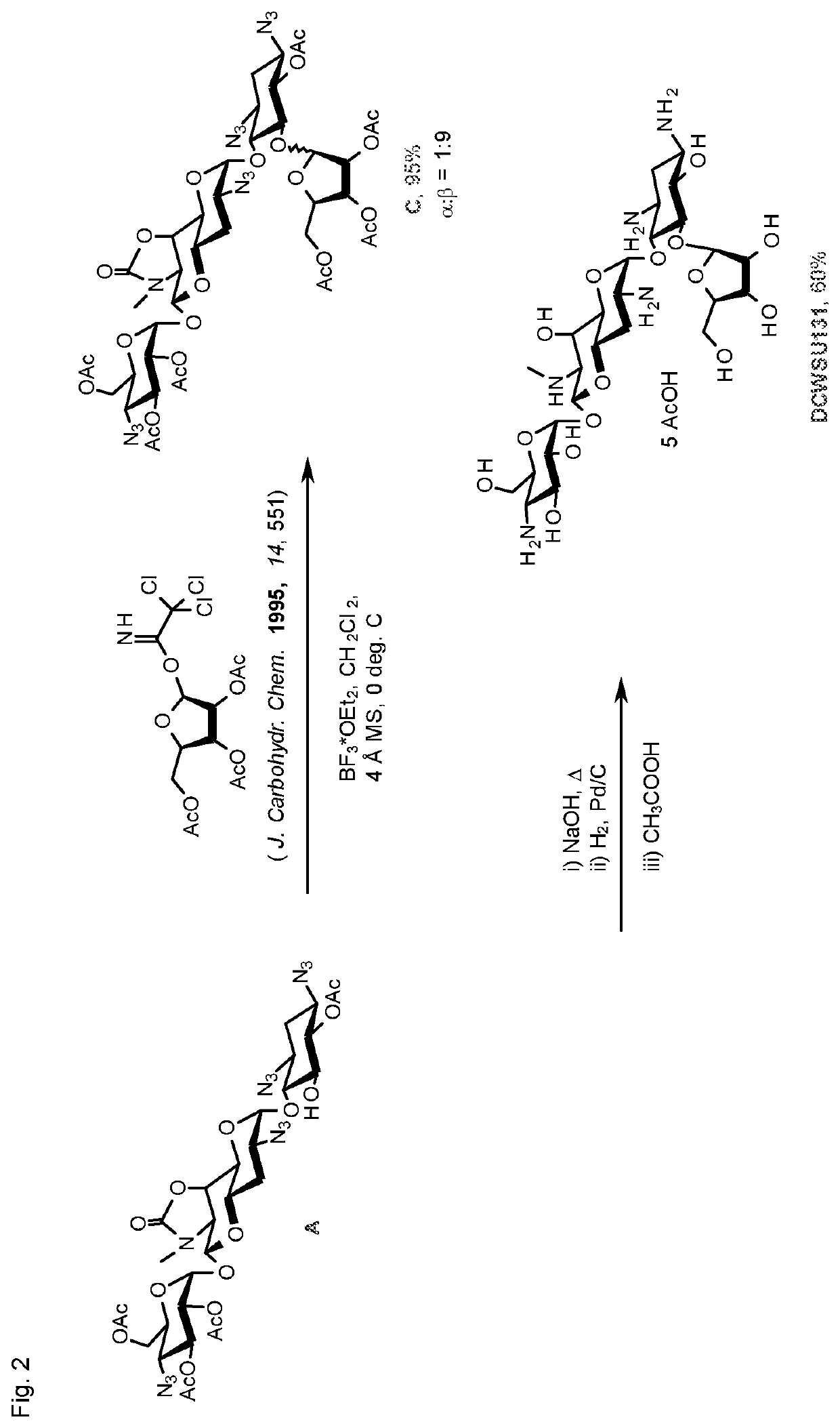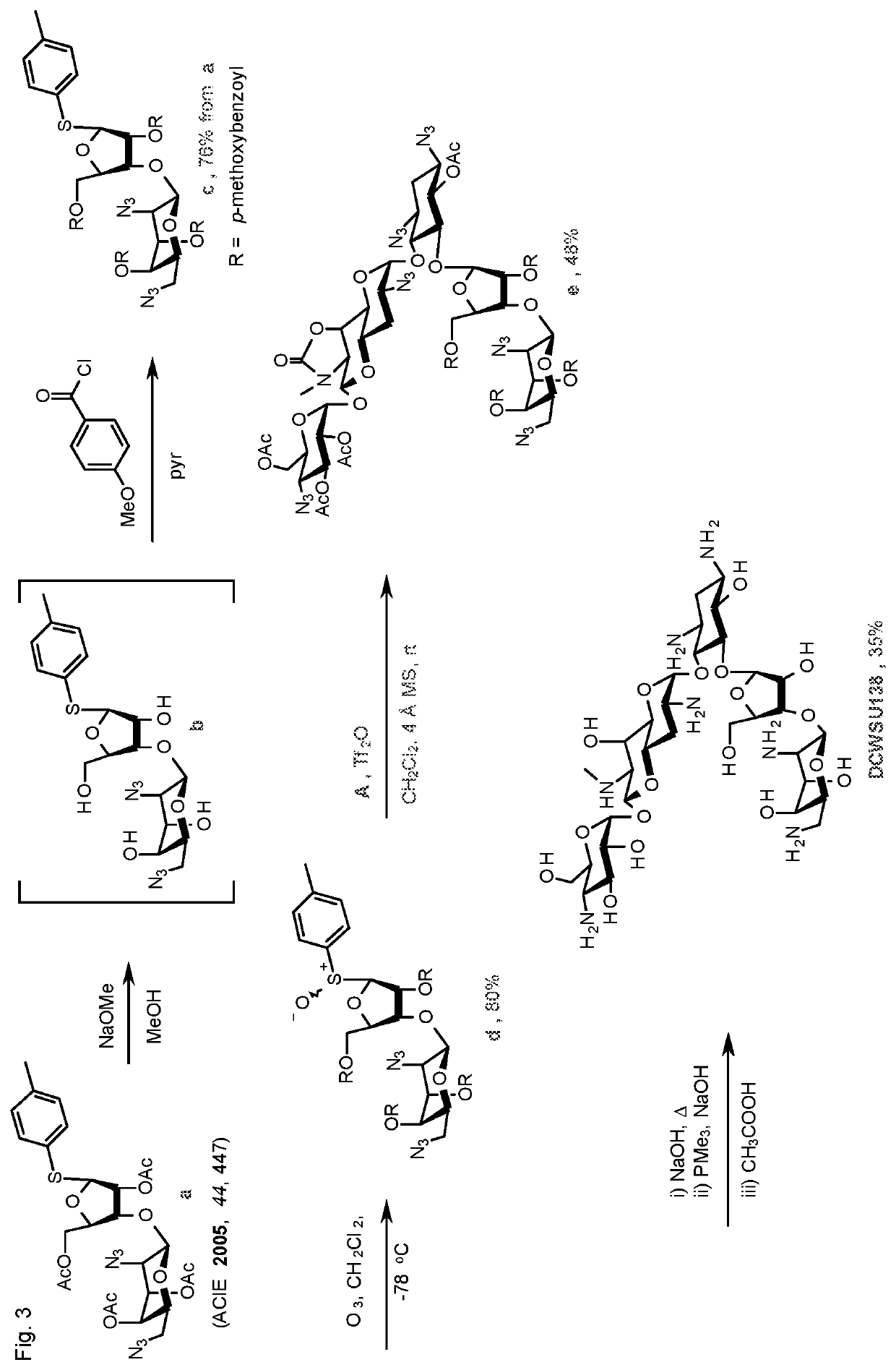Apramycin derivatives
a technology of apramycin and derivatives, applied in the field of aminoglycoside compounds, can solve the problems of agas currently in clinical practice, however, and achieve the effect of preventing agas from being compromised
- Summary
- Abstract
- Description
- Claims
- Application Information
AI Technical Summary
Benefits of technology
Problems solved by technology
Method used
Image
Examples
example 1
General Methods and Materials
[0172]All reagents and solvents were purchased from commercial suppliers and were used without further purification unless otherwise specified. Chromatographic purifications were carried out over silica gel. Analytical thin-layer chromatography was performed with pre-coated glass backed plates (w / UV 254) and visualized by UV irradiation (254 nm) or by staining with 25% H2SO4 in EtOH or ceric ammonium molybdate (ceric sulfate: (4.0 g); ammonium molybdate (10 g); H2SO4: 40 mL, H2O: 360 mL) solution. Specific rotations were obtained using a digital polarimeter in the solvent specified at 589 nm and 23° C. on an Autopol III polarimeter (Rudolph Research Analytical, Hackettstown, N.J.) with a path length of 10 cm. Infrared spectra were recorded on a FT / IR instrument. High resolution mass spectra were recorded with an electrospray source coupled to a time-of-flight mass analyzer (Waters). 1H, 13C and 2D NMR spectra were recorded on 400 MHz, 500 MHz or 600 MHz ...
example 2
Apramycin Derivatives Active in the Presence of AAC(3) AMEs.
[0176]A) O5-ribosylated apramycin derivatives
[0177]Table 1 shows 5-ribosylated apramycin derivatives. Minimal inhibitory concentrations (MICs, pg / ml) against clinical isolates from Institute of Medical Microbiology, Univ. Zurich, and the IC50 values for bacterial, human mitochondrial and human cytosolic ribosomes are indicated.
[0178]Compounds 124 and 138, in which the β-D-ri bofuranosyl ring appended to the O5-position of apramycin is substituted with a basic residue at the 3′″-position show excellent antiribosomal and antibacterial activity even against the IMM clinical isolates carrying the gene for AAC(3)-IV. These compounds are distinct from the simple unsubstituted β-D-ribofuranosyl apramycin derivative (compound 131), which was described in 1981 by a Japanese group, and which shows no activity against the AAC(3)-IV carrying bacterial strains.
[0179]The introduction of a ribofuranosyl ring renders compound 124 and compo...
example 3
DCWSU123 and DCWSU124
[0194]See the synthetic scheme of FIG. 1.
[0195]3-O-(2-Azidoethyl)-5-O-benzyl-1,2-O-isopropylidenea-α-D-ribofuranose (E). 5-O-Benzyl-1,2-O-isopropylidene-α-D-ribofuranose (1.00 g, 3.57 mmol) was dissolved in dry THF (3 mL) and NaH (214 mg, 5.36 mmol) was added under argon. After stirring for 15 min, a solution of 2-azidoethyl tosylate (1.72 g, 7.14 mmol) in dry THF (3 mL) was added dropwise followed by stirring for 12 h. More NaH (150 mg, 3.75 mmol) and 2-azidoethyl tosylate (860 mg, 3.57 mmol) were added and stirring continued for 24 h. After completion, the reaction was quenched with methanol and concentrated in vacuo and the crude product was purified by column chromatography (eluent: 5% to 30% EtOAc / hexanes) to give E (974 mg, 78%) as a gum; [α]D25==+71.2 (c=1.0); 1H NMR (400 MHz, CDCl3): δ 7.37-7.26 (m, 5H, ArH), 5.81 (d, J=3.8 Hz, 1H, H-1), 4.67-4.61 (m, 2H, H-2, PhCH2), 4.55 (d, J=12.2 Hz, 1H, PhCH2), 4.12 (ddd, J=9.0, 3.7, 2.1 Hz, 1H, H-4), 3.89-3.84 (m, ...
PUM
| Property | Measurement | Unit |
|---|---|---|
| path length | aaaaa | aaaaa |
| path length | aaaaa | aaaaa |
| pH | aaaaa | aaaaa |
Abstract
Description
Claims
Application Information
 Login to View More
Login to View More - R&D
- Intellectual Property
- Life Sciences
- Materials
- Tech Scout
- Unparalleled Data Quality
- Higher Quality Content
- 60% Fewer Hallucinations
Browse by: Latest US Patents, China's latest patents, Technical Efficacy Thesaurus, Application Domain, Technology Topic, Popular Technical Reports.
© 2025 PatSnap. All rights reserved.Legal|Privacy policy|Modern Slavery Act Transparency Statement|Sitemap|About US| Contact US: help@patsnap.com



